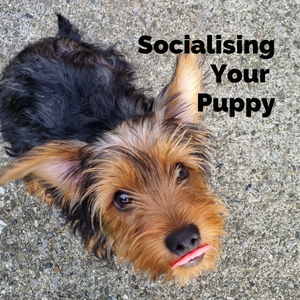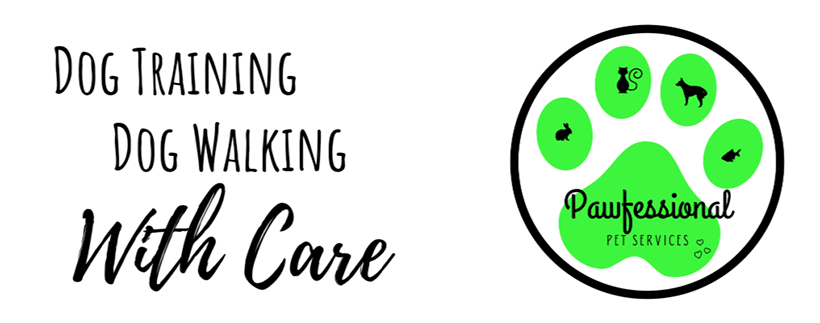
How to Socialise Your New Puppy
For the first eight to twelve weeks of your puppy’s life, it isn’t safe to take them out for walks in public as they’re not fully vaccinated. The good news? There are lots of things you can do at home to give you and your puppy a head start so that when the time rolls round for them to go out in the world, they are already familiar with different sights, sounds, and textures. By exposing your puppy to these sensations in a safe way, you will help them build confidence and set them up to become a well-rounded canine citizen!
Letting your puppy get used to different sights and sounds through interactive play and rewards-based training at home is a really great way to start the socialisation process. When you’re out and about, carry them in your arms and let them get used to all the different sights and sounds of your local area. We also recommend bringing your puppy on various mini road trips in your car.
Read on for a checklist of all the different sights and sounds you can help your puppy become familiar with before they’re ready for walks.
Sights
When you’re out in your local area, let your puppy get used to as many of the following sights as possible:
Things with wheels:
-
Wheely bins
-
Wheelchairs
-
Buggies
-
Bikes
People:
-
Men
-
Men with beards
-
People carrying bags, backpacks, and handbags
-
People wearing hats, big coats, costumes
-
People using a walking stick
-
Kids running
Other animals:
-
Kids running
-
Cats
-
Livestock
-
Horses
-
Deer
Sounds
To build confidence, you should gradually expose your puppy to the following sounds inside and outside your home:
Your house
-
Doorbell ringing
-
Knocks on the door
-
Rattling glass
Loud noises outside
-
Storms
-
High winds
-
Fireworks
Vehicles
-
Buses
-
Lorries
-
Motorbikes
-
General traffic noise
People (especially children!)
-
Crying
-
Screaming
-
Playing
-
Shouting
Touch
Let your puppy get used to the following different types of textures and surfaces, inside and outside.
Inside
-
Plastic
-
Laminate
-
Tile
-
Carpet
-
Thick rugs
-
Rubber
Outside
-
Tree stumps
-
Grass
-
Concrete
-
Sand
-
Wet surfaces
Handling
You will need to let your puppy get used to being handled. Gradually, get them used to the following different types of touch:
-
Touching ears
-
Holding paw
-
Lifting legs
-
Touching the base of their tail
-
Checking teeth
-
Looking in the eyes
Remember!
This is not an exhaustive list and it’s always best to go at your own puppy’s pace. What this is all about is positive exposure and keeping your puppy comfortable. By slowly and gradually exposing your puppy to all these different sights, sounds, and textures, you will set your puppy up for success and allow for you to have a fulfilling, long-lasting relationship with your puppy as they grow.
Also, we’d like to point out that at this point in their development, socialisation does not mean:
-
Meeting any and everyone/thing
-
Focus on handler around distractions
-
Observation and calmness over interaction
Some people think that puppies need to meet and greet every single person, dog, or child in the park. They don’t! In fact, you can actually end up over socialising your puppy, which can lead to overstimulation and exhaustion. This can then lead to frustration and hyperfocus on others.
Likewise, you’ll need to train your puppy not to say hi to everyone! For some puppies, not being able to greet everyone can lead to frustration and they may react, which often looks aggressive.
If your puppy shows signs of discomfort or distress (such as trying to escape or growling), around a new person or thing move away, offer reassurance, and give treats to create positive associations and more positive emotions.
A note on treats: some people think that giving treats at times like this ‘rewards’ the behaviour, when what it really does is simply change the dog’s internal state or emotion from one of fear, conflict or worry to expectancy.
Questions
For more tips like these, please follow us on social media here and here. And if you’ve got any questions, we’d love to hear from you! Feel free to send us an email or message.
If you’d like to know more about socialisation, we cover this in detail in our puppy classes! We run 6-week group classes regularly. Check out our pages on classes here.
Links
Finally, here are some useful links for you.
Pupdemic Facebook Group: https://www.facebook.com/groups/2855563721159632
Puppy Socialisation Step-by-Step Guide: https://www.youtube.com/watch?v=HCNcq7KYANc
Puppy Socialisation During the Pandemic: https://www.youtube.com/watch?v=dU4tfOdTvnE
Puppy Socialisation - Sound: https://youtube.com/playlist?list=PL-oTwuFvwH33-BIEjpZdXrslu3J6KxjFH
